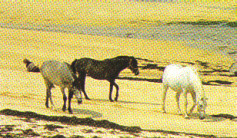Welcome »
Seaweed &algae.
It is not surprising that the popularity of seaweed and salt water plants has greatly increased over the last few years.
Food is getting expensive as a result of higher fuel costs; crops are increasingly used for producing bio fuel & diesel.
In addition; climate changes, environmental problems like salinity and pollution, the decreasing amount of fresh water, and the use of land for urbanisation and recreation.
Many Seaweed & Algae are fast growers (photo synthetically highly efficient), easy to cultivate and can be used where commercial crops now fail. The best place to locate these seaweed cultivation farms would be in dessert regions and close to the sea. Shallow saltwater pools will do and no need for desalination.
Sea greens & sea lettuce/Ulva.
There are many varieties of suitable seaweed available but the sea lettuce is one of the species which draws a lot of attention and is looked at more closely. Ulva is a small genus of marine and brackish water green algae. It is edible and is often called 'Sea Lettuce'. It is found worldwide in sheltered to moderately exposed situations on rocks, submerged structures, in pools and shallow waters near the low tide mark.
It thrives in brackish water with organic enrichment. That the salt content of the water is not critical is very important. It thrives in polluted water without being effected by it from a quality point of view. The semi permeable membranes (Cell wall) does stop most types of harmful organic materials including bacteria. Would you grow brown or red seaweed in the same environment it would be toxic.
Composition. (Average)
Protein 18-24 %
Carbohydrates 40-45 %
Magnesium 2-3 %
Sodium 1-2 %
Fat 1-2 %
Potassium 0.7-1 %
Calcium 7000-8000 ppm
Iron 870-1370 ppm
Manganese 300-350 ppm
Iodine 200-250 ppm
Vitamin A, C, B3, B12

|